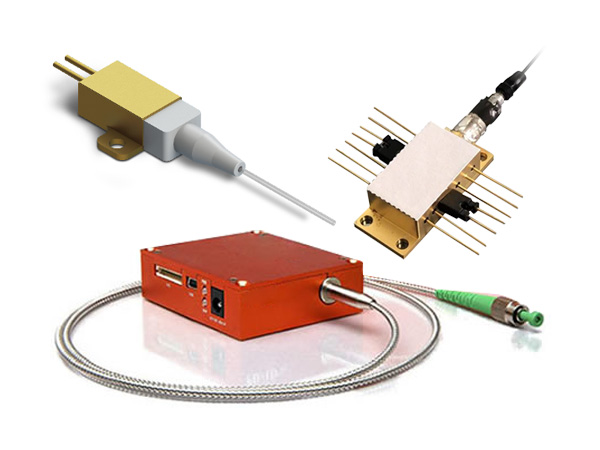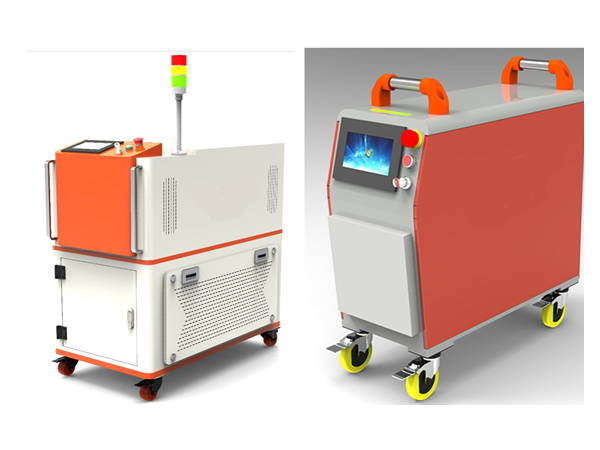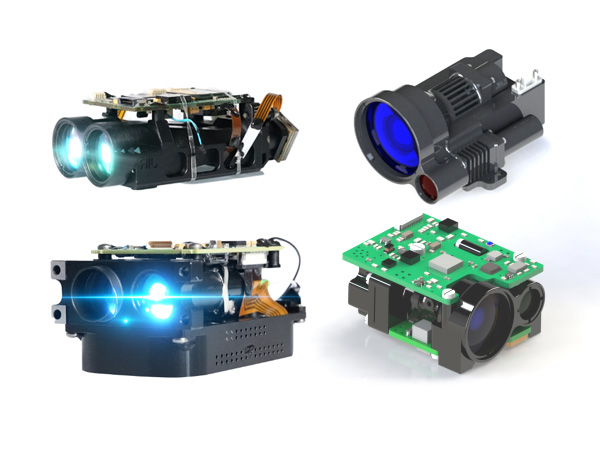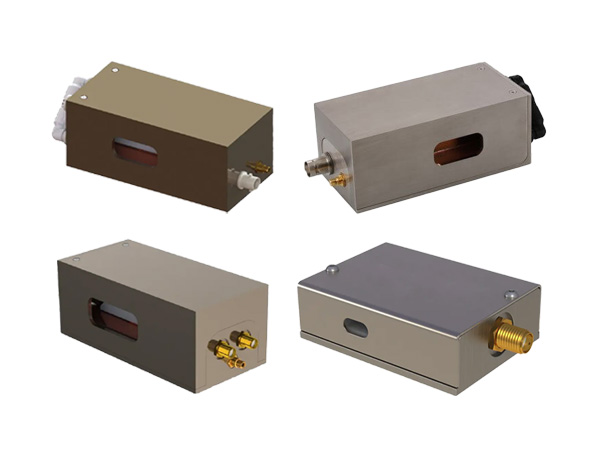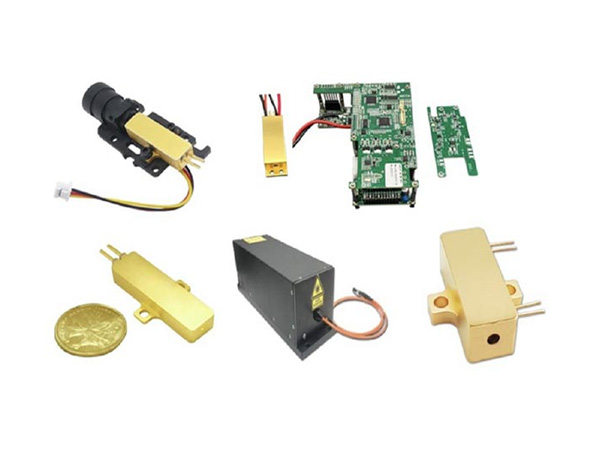Superluminescent Diodes (SLDs): Broadband Tech Innovations & Multi-Field Uses
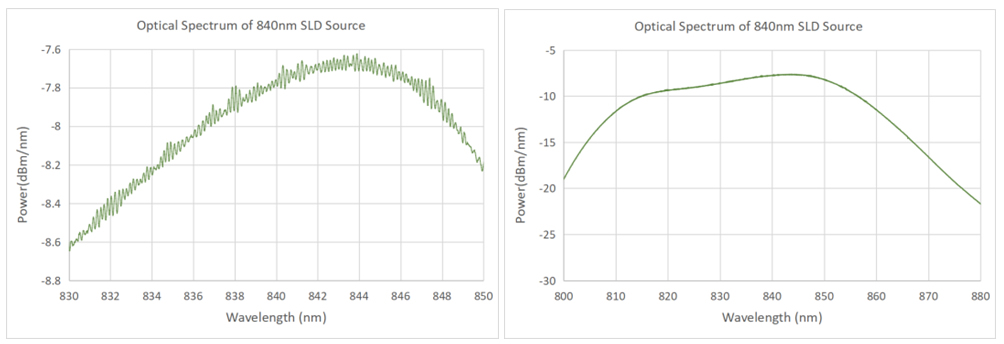
In the field of modern optical technology, Superluminescent Diodes (SLDs) – leveraging their unique performance that bridges the gap between Laser Diodes (LDs) and Light-Emitting Diodes (LEDs) – have become a pivotal light source driving advancements in fiber optic sensing, medical imaging, test and measurement, and other domains. As a key player in the optical technology sector, we offer a series of SLD broadband light source products. With advantages such as wide coverage range, high stability, and versatility across scenarios, these products provide high-performance solutions for industrial clients worldwide.

I. Our SLD Product Portfolio: Classification and Core Technical Features
Our SLD product lineup is strategically structured to address diverse application needs. It is categorized into four core series – Basic Broadband SLD Light Sources, Ultra-Wideband SLD Light Sources, STLD Series Integrated Light Sources, and STDL Series Specialized Light Sources. Each series complements the others in terms of parameter design and functional positioning, fully covering requirements from general testing to high-precision sensing.
1. Basic Broadband SLD Light Sources (SMR Series)
Representing our entry-level and general-purpose offerings, the SMR Series focuses on "high stability + ease of operation," with core parameters and functional designs tailored to routine industrial testing scenarios:
Spectrum & Power: The central wavelength covers the full telecom band (O to U bands) from 850nm to 1650nm. Total output power is available in three options: 1mW, 5mW, and 10mW. With a spectral density of ≥-25dBm/nm and spectral ripple <0.2dB, it ensures uniform and consistent output optical signals.
Stability Performance: The 15-minute power instability is ≤±0.02dB (equivalent to ≤±0.5%), and the 8-hour power instability is ≤±0.05dB (equivalent to ≤±1.2%). The Degree of Polarization (DOP) is ≤0.2dB, maintaining signal stability even during long-term continuous operation and minimizing testing errors.
Form Factor & Control: Two form factors are available – bench-top and module. Bench-top models are equipped with key-lock switches and physical buttons, while module models support RS232 serial communication. This versatility adapts to different integration scenarios: for example, modules can be embedded in automated test systems, while bench-top units are more suitable for manual operation in laboratories.
2. Ultra-Wideband SLD Light Sources: Breaking the Limits of Spectral Coverage
Developed for high-end applications requiring a wide wavelength range (e.g., multi-band fiber optic sensing, wide-spectrum spectral analysis), our ultra-wideband SLD light sources deliver key performance upgrades:
Wavelength & Power Breakthrough: The central wavelength range extends from 1250nm to 1650nm, with total output power >10mW. Compared to the basic series, it covers a broader telecom band, enabling testing across O to U bands without frequent light source replacement.
Consistency & Compatibility: Core parameters such as spectral density, ripple, and stability align with the basic series (spectral density ≥-25dBm/nm, ripple <0.2dB). It also uses SMF-28 optical fiber and FC/APC connectors, ensuring compatibility with existing test systems and reducing replacement costs.
Typical Application Scenarios: Primarily used for multi-band fiber optic component testing (e.g., optical switches and couplers covering S, C, and L bands) and wide-spectrum fiber optic sensing (e.g., Distributed Temperature Sensing, DTS), reducing the complexity of multi-light source combinations.
3. STLD Series: Integrated and Customized Solutions
The STLD Series is our specialized product line for system integration clients, with core advantages in miniaturization, high integration, and flexible control. It includes multiple sub-series to meet diverse needs:
Miniaturized Modules (STLD-mCS/sCS): Powered by 9-30V DC, these modules support 50kHz SLD modulation and ACC-APC switching control, with a drive current of no more than 400mA. Their compact size allows embedding in portable devices (e.g., handheld spectrometers), serving as upgraded replacements for the SLD-MS Series.
High-Power Compact Modules (STLD-CS): These support integration of couplers and optical isolators (including large-size 850nm models). They use APC control by default, with optional ACC-APC mode switching, making them suitable for high-power scenarios (e.g., lidar supplementary lighting).
Digitally Controlled Modules (STBLM2-D): Powered by 12V DC, these modules integrate up to 3 SLDs and support USB digital control and TTL control for remote operation via computers. With excellent spectral width and power balance performance, they are ideal for high-precision laboratory testing.
Bench-Top High-Power Models (STM-S/D/T/Q): The STM-S is a single-SLD high-power model (output power up to 30mW), while the STM-D/T/Q are multi-SLD models (output power >20mW, spectral width up to 200nm). All feature optical isolation, making them suitable for industrial laboratories and research scenarios.
4. STDL Series: Customized for Specialized Scenarios, Covering High-End Needs
As our flagship product line, the STDL Series is subdivided into sub-categories such as SLED Light Sources, Integrated Infrared Modules (I2LM), and ASE Light Sources. It provides customized solutions for high-end scenarios including navigation, medical care, and Structural Health Monitoring (SHM):
SLED Light Sources: Covering wavelengths from 1260nm to 1700nm, with a bandwidth of 25nm to 100nm and output power of 0.2mW to 50mW. Package options include 8-pin BTF and 14-pin BTF/DIL. Some models (e.g., STDL-CS68M5A with a central wavelength of 1680nm) are specifically designed for medical imaging, with spectral ripple as low as 0.3dB.
I2LM Integrated Modules (STBX-BZ Series): Developed based on the 14-pin BTF SLEDs of the STDL-CS Series, these modules offer adjustable power, over-temperature protection, and high-speed modulation. For example, the BX-10 Series operates at temperatures up to 70℃, while the BZ-1 Series supports 20MHz analog modulation and 200MHz digital modulation, adapting to harsh industrial environments and high-speed sensing needs.
STDL-ASE Series: These all-semiconductor low-DOP ASE light sources cover O to U bands, with CW output power stability <0.01dB. They support 20MHz analog modulation and digital modulation below 1ns, making them suitable for OCT medical imaging and SHM sensing in the oil and gas sector. Some models (e.g., STDL-ASE-CW-CSC183A) achieve a power density of -3.5dBm/nm, meeting the requirements of deep-tissue imaging.
II. Core Technical Advantages: Underlying Capabilities Supporting Multi-Scenario Applications
The competitiveness of our SLD products stems from our expertise in three core technical areas – spectral control, stability design, and integration processes. These technical features collectively ensure reliable performance across diverse scenarios.
1. Wide Spectrum & Low Ripple: Adapting to High-Precision Testing and Imaging
The core value of SLDs lies in their broadband spectrum. Through material and structural optimization, we achieve precise control of spectral performance:
Wide-Spectrum Coverage Technology: By adjusting the material composition of the semiconductor active region (e.g., quantum well structures), cavity design, and surface anti-reflection coatings, we ensure uniform gain for photons of different wavelengths. For instance, our ultra-wideband series covers 1250nm to 1650nm, while some models in the STD-ASE series achieve a bandwidth of 120nm.
Low Ripple Control: The spectral ripple is generally <0.2dB (and <0.1dB for some high-end models), far below the industry average. This avoids testing errors caused by ripple; for example, in insertion loss testing of fiber optic components, low ripple ensures consistent test results across different wavelengths.
2. High Stability: Withstanding Complex Environments and Long-Term Operation
Stability is critical for industrial and medical applications. We build a stable system through three aspects: temperature control, power feedback, and circuit design:
Temperature Control: Equipped with high-precision Thermoelectric Coolers (TEC) and thermistors, some products (e.g., the STDL-BX10 Series) support wide-temperature operation from -20℃ to 70℃, preventing wavelength drift and power fluctuations caused by temperature changes.
Power Stability: Adopting dual modes of Automatic Current Control (ACC) and Automatic Power Control (APC), the 15-minute power instability is ≤±0.02dB, and the 8-hour power instability is ≤±0.05dB, meeting the needs of 24/7 continuous testing.
Anti-Interference Design: Integrated optical isolators reduce interference from reverse light on the light source. Additionally, shielding circuits are used in some modules (e.g., STBLM2-D) to minimize Electromagnetic Interference (EMI), adapting to the complex electromagnetic environment of industrial automation workshops.
3. High Integration & Flexibility: Adapting to Diverse Scenario Needs
Through modular design, customized functions, and standardized interfaces, we enable our SLD products to be flexibly integrated into different systems:
Flexible Form Factors: Available in module (minimum size 125mm×150mm×20mm), bench-top, and integrated module (e.g., I2LM) form factors. Modules can be embedded in client devices, while bench-top units are suitable for standalone operation.
Customized Functions: Support spectral combination (e.g., SLED sets can combine 2-6 SLEDs to cover 1250nm-1700nm), interface customization (e.g., RS232/USB/TTL control), and power adjustment (e.g., the BX-9 Series supports adjustable optical power).
Standardized Compatibility: Uniformly using SMF-28 optical fiber and FC/APC connectors, which comply with telecom industry standards. They can be directly connected to existing test equipment (e.g., spectrometers, optical power meters) without additional adaptation.
III. Application Scenarios: Comprehensive Penetration from Industrial Testing to Healthcare
The performance characteristics of our SLD products enable core applications in four key fields – fiber optic sensing, medical imaging, test and measurement, and navigation – addressing critical technical pain points across industries.
1. Fiber Optic Sensing: The "Signal Core" for High-Precision Monitoring
In fields such as Structural Health Monitoring (SHM), oil and gas sensing, and power monitoring, the low coherence and wide spectrum of SLDs offer significant advantages:
Structural Health Monitoring: Paired with Fiber Bragg Grating (FBG) sensors, they are used for strain, stress, and temperature monitoring of bridges, pipelines, and wind turbine blades. Low coherence avoids interference fringe drift caused by environmental vibrations; for example, the STDL-CS5169A (1550nm, 80nm bandwidth) can accurately capture tiny strain changes.
Oil, Gas & Power Sensing: In oil and gas well monitoring, ultra-wideband SLDs (1250nm-1650nm) meet both temperature and pressure sensing needs without switching between multiple light sources. In power systems, they are used for temperature monitoring of high-voltage equipment, with high stability ensuring long-term reliable operation.
2. Medical Imaging: The "Visual Eye" for OCT Technology
Optical Coherence Tomography (OCT) is a key technology in the medical field, and SLDs – as the core light source for OCT – directly determine imaging resolution and depth:
Ophthalmic Imaging: SLDs in the 1310nm and 1550nm bands (e.g., STDL-CS3159A, STDL-CS5169A) enable clear imaging of retinal layers. The wide spectrum delivers micron-level axial resolution, helping doctors detect early-stage diseases such as glaucoma and macular degeneration.
Dermatological & Endoscopic Imaging: Models in the 1680nm band (e.g., STDL-CS68M5A) offer deep tissue penetration, making them suitable for skin tumor diagnosis and gastrointestinal endoscopic imaging. Low coherence reduces speckle noise, improving image clarity.
3. Test and Measurement: The "Standard Tool" for Telecom and Optoelectronics Industries
In fiber optic component testing, system verification, and production quality inspection, SLDs are indispensable test light sources:
Fiber Optic Component Testing: Used for insertion loss, return loss, and bandwidth testing of optical switches, couplers, and Wavelength Division Multiplexers (WDM). The wide spectrum covers the full operating band of components; for example, when testing C-band WDMs, 1530nm-1565nm SLDs can complete testing of all channels in one go.
Production Quality Inspection: In semiconductor and solar cell manufacturing, they are used for surface metrology and thin-film thickness testing. High stability ensures consistent test results in mass production.
System Verification: In 5G telecom network construction, they are used for performance verification of optical modules, supporting multi-channel multiplexing testing to improve verification efficiency.
4. Navigation: The "Precision Guarantee" for Fiber Optic Gyros
Fiber Optic Gyros (FOG) are core components of inertial navigation systems, and the low noise and high stability of SLDs directly affect gyro precision:
Application Scenarios: Used in navigation systems for UAVs, ships, and spacecraft. Models such as the STDL-CS5103A (1550nm, 10mW power) feature low Relative Intensity Noise (RIN, typically 125dB/Hz-140dB/Hz), avoiding navigation errors caused by noise.
Advantages: Compared to traditional laser light sources, the low coherence of SLDs reduces non-reciprocal noise, while the wide spectrum enhances the dynamic range of gyros, adapting to high-speed motion scenarios.
IV. Summary and Outlook: Future Directions of SLD Technology
Our SLD products, with advantages of wide spectrum, high stability, and high integration, have become core light source solutions across multiple industries. From a technical development perspective, we will continue to pursue breakthroughs in three key directions:
Higher Performance: Further expand the wavelength range (e.g., covering bands above 1700nm), increase output power (targeting over 50mW), and reduce noise (aiming for RIN <120dB/Hz) to adapt to higher-end scenarios such as quantum sensing and deep-ultraviolet imaging.
Smarter Integration: Integrate AI algorithms to enable automatic spectral calibration, fault early warning, and remote diagnosis. For example, AI can analyze power variation trends to predict light source lifespan in advance.
Greener and More Energy-Efficient: Optimize circuit design and TEC efficiency to reduce power consumption (e.g., module power consumption <10W), aligning with global carbon neutrality trends.
From an application perspective, as fields such as 5G/6G telecom, autonomous driving, and precision medicine continue to develop, demand for SLDs will grow steadily. For instance, supplementary lighting for lidar in autonomous driving, multi-band testing in 6G networks, and OCT imaging in AI-assisted diagnosis will all create new growth opportunities for our SLD products. As innovators in broadband light source technology, we will continue to drive industry progress through technological breakthroughs and provide global clients with even higher-quality optical solutions.
For more information on our Superluminescent Diodes, please click here.
 English
English Français
Français Deutsch
Deutsch euskara
euskara Русский язык
Русский язык Italiano
Italiano Português
Português Nederlands
Nederlands Polski
Polski Greek
Greek Lietuva
Lietuva Türkçe
Türkçe 日本語
日本語 한어
한어 中文
中文 தாமில்
தாமில் فارسی
فارسی हिंदी
हिंदी Tiếng Việt
Tiếng Việt ภาษาไทย
ภาษาไทย Pilipino
Pilipino Indonesia
Indonesia தாமில்
தாமில்
